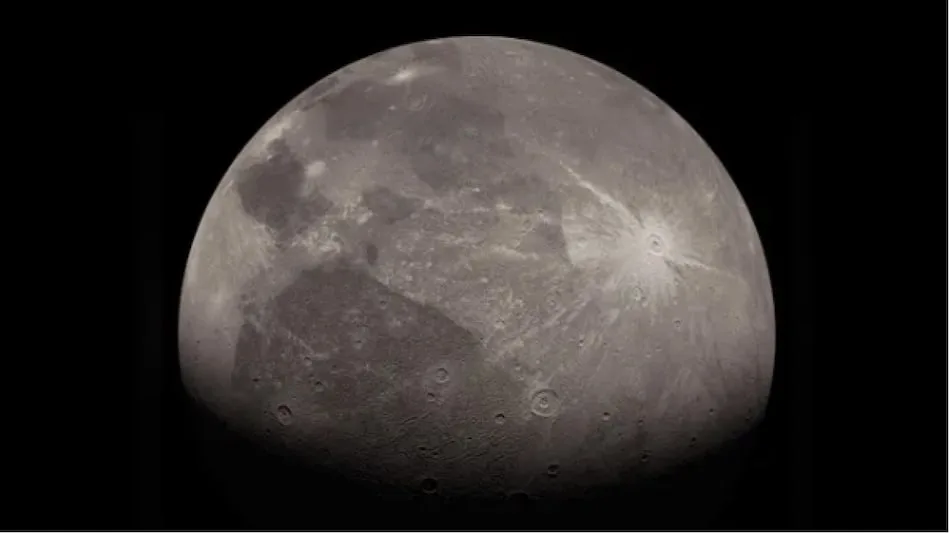Table of Contents
Asteroid Impact Reoriented Jupiter’s Largest Moon Ganymede 4 Billion Years Ago
A massive asteroid impact 4 billion years ago dramatically reshaped Ganymede, Jupiter's largest moon.

Photo Credit: NASA/JPL-CALTECH/SWRI/MSSS/Kalleheikki Kannisto
An enhanced image of Ganymede was captured by NASA's Juno spacecraft during its June 7, 2021, flyby.
Highlights
- Asteroid impact reshaped Jupiter's moon Ganymede 4 billion years ago
- The moon's surface and rotation were dramatically altered by impact
- ESA's JUICE mission aims to study Ganymede’s changes in 2031
A massive asteroid impact around 4 billion years ago drastically altered Jupiter’s largest moon, Ganymede. New research suggests this colossal event not only reoriented the moon but also significantly influenced its geological evolution. According to planetary scientist Naoyuki Hirata from Kobe University, the asteroid that struck Ganymede was approximately 186 miles (300 kilometres) wide—about 20 times larger than the asteroid that caused the extinction of the dinosaurs. This impact was powerful enough to destabilise Ganymede, causing it to spin on its axis.
Impact Details and Effects
The study, published in the journal Scientific Reports on 3 September 2024, reveals that the asteroid collided with Ganymede at an angle between 60 to 90 degrees, creating a crater between 870 to 990 miles (1400 to 1600 km) wide. Hirata estimates that the impact would have removed the moon’s original surface entirely, given that the crater would cover about 25 percent of Ganymede’s surface area. This impact had profound effects on the moon’s geology and internal structure.
- Elon Musk Believes He Might Be Dead Before Humans Settle on Mars
Surface Features and Future Research
The evidence for this dramatic reorientation is evident in Ganymede’s surface, which features extensive furrows and concentric rings believed to be remnants of impact basins. The largest of these furrow systems suggests that the moon’s orientation changed, with the impact crater now facing away from Jupiter. Despite earlier imaging by Voyager spacecraft and the Galileo probe, many aspects of Ganymede’s surface remain poorly understood.
The upcoming European Space Agency's JUICE (Jupiter Icy moons Explorer) mission, scheduled to arrive at Jupiter in 2031, aims to provide more insights. The JUICE spacecraft will conduct detailed studies of Ganymede, Europa, and Callisto, and will orbit Ganymede for nine months starting in December 2034, marking a first for spacecraft missions beyond Earth's moon.
- James Webb Space Telescope Finds Hydrated Minerals on Asteroid Psyche
- NASA Ends NEOWISE Mission After Years of Successful Asteroid Tracking

